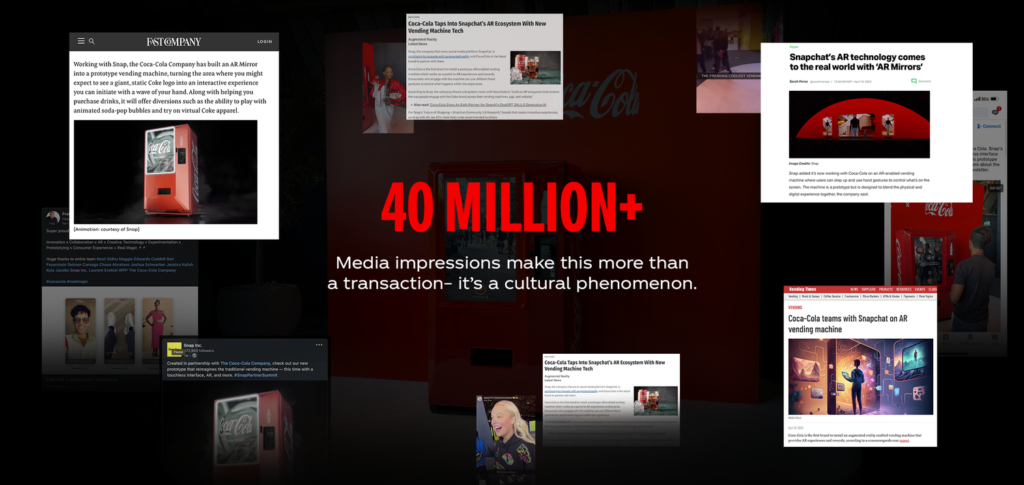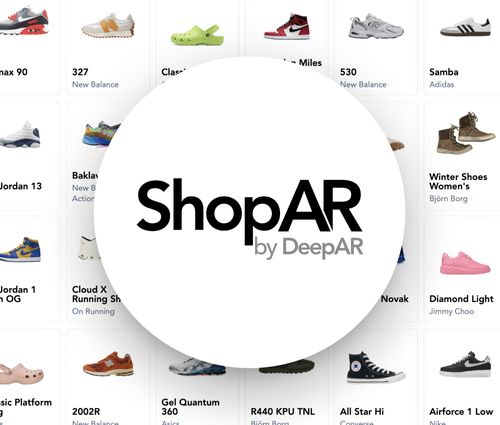
As technology accelerates and consumers willingly share personal data—ranging from preferences to social profiles—expectations around hyper-personalized and immersive experiences are skyrocketing. Today’s consumers demand not only relevance but active participation in the stories brands tell. To stay ahead, brands must meet audiences on their platforms, creating engaging and interactive narratives.
This shift has opened a new chapter in brand storytelling, where immersive design, fueled by consumer insights, creates deeper, more meaningful engagement. It’s no longer just about telling a story; it’s about creating an experience.

One example of immersive storytelling is the Snapchat x Coca-Cola AR Vending Machine. Using augmented reality, Coca-Cola transformed a traditional vending machine into a playful, interactive experience that consumers could engage with digitally through Snapchat. This blend of physical and digital worlds creates a more dynamic interaction, inviting the audience to actively participate rather than passively consume brand messaging.
This shift toward interactive engagement showcases how brands can use immersive design to not only promote products but also build deeper connections with their audiences by making them part of the narrative.

Virgin Voyages’ Jen AI is another prime example of using technology to create hyper-personalized experiences. The AI-powered chatbot crafts custom digital invitations for potential customers based on their preferences and interactions. It goes beyond traditional marketing by making every touchpoint feel more intimate and personal.
In a more profound use of immersive technology, the Backup Ukraine project leverages 3D scanning to digitally preserve Ukraine’s cultural artifacts amidst the ongoing conflict. Using AR and 3D technologies, volunteers are helping to create digital replicas of monuments and historical sites that are at risk of destruction.
This initiative not only demonstrates how immersive technology can preserve history but also how storytelling can take on deeper, more impactful roles. By allowing anyone with a smartphone to participate in preserving cultural heritage, the project transforms traditional storytelling into a participatory effort that safeguards history.

The rise of generative AI is revolutionizing content creation. Platforms like Runway AI allow users to create high-quality video content from text prompts, making storytelling more accessible and dynamic.
Through its collaboration with Lionsgate, Runway AI is helping to reshape media production by reducing time and resources required for complex scenes. This democratization of video creation allows both brands and consumers to tell stories in ways that were once only possible for professional filmmakers. The potential for brands to collaborate with their audiences in creating user-generated stories is vast, offering unprecedented engagement opportunities.
In the retail space, brands like Nike are already using augmented reality to enhance customer experiences. Their AR Sneaker Try-On feature allows users to virtually try on shoes using their phones before making a purchase. This practical yet immersive use of AR improves the shopping experience by reducing return rates and boosting customer confidence.
Such applications highlight how AR and VR are not only revolutionizing entertainment but also retail, giving consumers greater control over their brand interactions.

The future of storytelling will increasingly revolve around real-time, hyper-personalized, and interactive narratives. Netflix’s Bandersnatch, for example, gave viewers the power to control the storyline, offering a glimpse of what’s possible when consumers are given agency in the narrative.
Brands could adopt similar models, offering interactive campaigns where consumers make choices that affect outcomes, creating a deeper emotional connection. Imagine a car brand allowing customers to digitally experience different “lives” with their new car, from daily commutes to adventurous road trips. This personalized, interactive experience would engage customers in ways traditional ads cannot.
As technology continues to advance, the future of storytelling will be shaped by immersive design, hyper-personalization, and real-time engagement. From Coca-Cola’s AR vending machine to the preservation of Ukrainian culture through 3D scanning, brands and projects are already embracing these trends.
With the power of AI, AR, and VR, storytelling is becoming more dynamic and democratized, offering brands the chance to engage audiences in unprecedented ways. The future of storytelling is here—and it’s interactive, immersive, and profoundly personal.